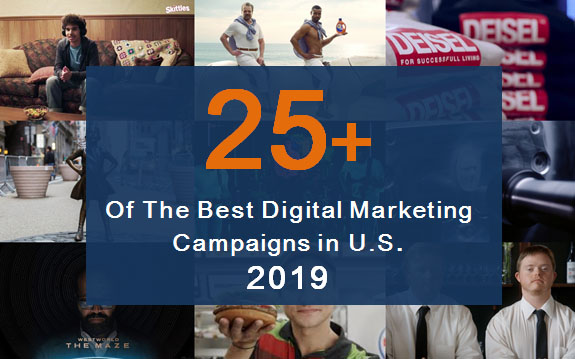How to Design an SEO Campaign to Rank for a Specific Keyword
Search Engine Optimization | Jul 22, 2024
A common misconception about SEO is that the goal is to make your home page rank for a bunch of different keywords related to your product or service.
While it’s possible for a single page to rank in the top 10 for multiple keywords, and certainly in the top 100 for dozens of keywords, as a strategy, trying to rank for multiple keywords with a single page is always a bad idea.
That’s because as a general rule, in 2024, Google is trying to give searchers the single best result for the exact query entered — meaning it’s trying to find results that are 100 percent devoted to answering the searcher’s question or meeting their needs.
And it’s impossible to create a webpage that is 100 percent focused on more than one thing. That’s simply not how percentages work, sorry to any swim coach who ever told me to give 110 percent.
Effective SEO strategies take the approach of creating a unique web page for every keyword you’re trying to rank for. By only targeting one keyword with each page, you can give it that 100 percent focus that Google is looking for, giving it its best chance of ranking in the top 10. And as we all know, if it’s not in the top 10, it might as well not be there at all.
So let’s say you’ve identified 25 keywords that would be amazing to rank for. These are keywords that are the exact thing your target audience would search for when they’re trying to solve a problem your product solves, or looking for the service you offer. For example, for a disaster cleanup company, these would be keywords like “fire damage clean up” “restoration services” or “smoke damage cleaning.”
So how do you get your website to rank for those 25 keywords? You’ll probably need to create (or revise) 25 unique web pages.
In this article, you will learn the process of creating (or revising) a single web page to maximize its chances of ranking for a single keyword. And — spoiler alert — to rank for 25 keywords, all you have to do is repeat this process for each of the keywords.
An important caveat
While the process I’ll share is the process to rank for a single keyword, it’s important to note that a website that only has one page is very unlikely to ever rank in the top 10 on Google for anything (other than its name and only then if it’s a super weird and unique name).
Google is looking for websites that demonstrate authority on a larger topic, and to do that, you often need to have multiple web pages devoted to similar and related topics to the keyword you want to rank for. Each additional web page that you publish on a related topic will boost your whole site’s ability to rank for keywords in that overall subject matter.
Think of Google as a browser in a physical library that is looking for a single book that is most likely to answer their question. They’re probably going to pick out the thickest book on the shelf in the relevant section because it looks like it would be the most thorough. (OK the analogy breaks down if you’re not a big fan of reading and you are drawn to slimmer books, but hopefully it helped you get the point.)
A 7-Step Process for Optimizing A Single Webpage for a Single Keyword
First, let me warn you, this isn’t quick or easy. It’s thorough and admittedly kind of intense. That’s why SEO is hard. Not because it’s complicated, but because it’s a competition. It’s kind of like the Olympics of content. You gotta get gold, silver, or bronze, or else no one will ever remember you.
Step 1: Decide Whether to Revise or Start Fresh
Start by plugging your target keyword into a tool like Ahrefs (or simply Googling it) to find out which (if any) pages on your current site rank for that keyword.
Perhaps you’re the restoration services company and an old blog post on your website ranks 32nd for smoke damage cleaning. Should you revise that page and hope better content and on-page SEO will boost its ranking? Or should you start from scratch with a new page?
The answer mostly depends on whether that old piece has any high-quality backlinks — meaning links from credible websites that wanted to provide readers additional info by linking to your page. If the piece does have good backlinks, those could help boost its ranking after you improve the content, so you don’t want to lose those links. In that case, I would revise the content and republish the page.
Another option if the old page has good backlinks is to remove the old page and set up a 301 redirect to the new page. This should pass along link juice to the new page from those old links (and keep them from giving 404 errors to users of those other websites). This is a good option if the URL of that old blog post was long and not user-friendly or didn’t include the target keyword.
If your old content has no backlinks and ranks lower than about 25th, I would just start from scratch. You might consider deleting the old page if the content is particularly low quality because Google also seems to have a preference for websites that have no dead weight. And if it’s low quality, it might not represent your brand very well.
Step 2: Analyze the SERP
Next, analyze the Search Engine Results Page (SERP) for your target keyword. This is when you’re scoping out the competition. It’s like the swimmers standing behind the blocks at the Olympics before the 100-meter freestyle, looking at the other swimmers in their heat. What are they doing to try to win the gold? How can I beat them? Observe the topics covered by top-ranking articles and identify common elements, such as frequently cited studies or sources. Do the posts in the top three have a bunch of videos? You might need to include some videos. Do they all link to the same major study or website? You might need to incorporate similar references to appear credible.
Observe the topics covered by top-ranking articles and identify common elements, such as frequently cited studies or sources. Do the posts in the top three have a bunch of videos? You might need to include some videos. Do they all link to the same major study or website? You might need to incorporate similar references to appear credible.
And most importantly, what do they not do well? Do they have a crappy user interface? Do they load really slowly? Do they bury the most important information way down in the article? Do they give a bad explanation of the most important concepts?
Or do they speak way below the knowledge level of the audience you’re trying to reach, increasing the likelihood that the reader would rage quit the website because it’s talking to them like they’re an idiot?
Write down all of these observations. They’ll form the shell of your outline for your new Olympic Gold-worthy web page.
Step 3: Interview a Subject Matter Expert (SME)
If you’re not a subject matter expert in the topic you need to write about (because you’re a content writer or an SEO and you’re an expert in writing and web design, but not fire restoration!), you need to interview someone who is an expert. Preferably, someone works for your organization so that your post can represent the real expertise of your company.
A subject matter expert should be able to provide real-life anecdotes that enrich your content. Like someone telling the gruesome stories of how long it took to clean the smoke from a home where the owner left eggs boiling on the stove for three hours.
Those are the interesting stories that could make your content stand out from the rest and will be more likely to give your readers what they’re looking for.
An SME can also help you get a read on how well your target audience understands the subject matter so that you avoid writing below their knowledge level and pissing them off. A question I use all the time in interviews is, “Is there a lot of confusion about this point among your customers? Or is this something they all already know?”
Step 4: Outline Your Piece
After the interview, create a detailed outline for your content. Ensure that it aligns with the search intent in both format and content, meaning you’re giving searchers a blog post only if it appears they want a blog post. If all of the top results are videos, you should probably be creating a video. And if all of the top results are recipes, you better include a recipe.
Make sure to cover all the points you noted in your SERP analysis and ask yourself, am I offering something unique? Am I thoroughly answering the searcher’s question? If I was a searcher, would this web page give me the info I need or would it make me rage quit and go back to Google?
Step 5: Write & Publish the Piece
Now it’s time to do some good old-fashioned writing. And I say that as a warning. If you try to plug your outline into ChatGPT at this point, you’re most likely going to lose all of the unique elements you worked so hard to add to your piece.
Unfortunately, ChatGPT has a way of making everything sound exactly the same, and just two years into its existence, human readers are now programmed to fall asleep the minute they start reading ChatGPT-produced content.
After you’ve written your piece, use a tool like Clearscope to ensure your content includes all the necessary phrases to convince Google that your web page provides a thorough answer to the search query. If you’re using Clearscope, aim for an A+ rating.
Then apply all of the other on-page SEO best practices, such as using appropriate H1s and H2s, using bulleted lists, short paragraphs, and videos and screenshots whenever they would improve the reader’s understanding.

Before publishing, ensure that your web page checks all of the boxes from a tool like Yoast SEO. Make sure your URL slug includes the target keyword. The meta description should also contain the keyword, and so should the alt tags on any images you included.
Step 6: Add Internal Links
One of the ways Google evaluates whether a specific page on your website is the best individual page to answer the searcher’s query is if you’ve linked to that website for related terms from other pages on your website. These are internal links. Internal links need to be natural and contextual, and it’s helpful if they come from other pages that already have a decent number of high-quality backlinks.
A good starting point is to include a minimum of three backlinks for each new page you publish. You can use Google’s site search feature to find existing content on your website that mentions the target keyword and jump into each of those articles to add a link to your new piece with the target keyword as the anchor text.

Step 7: Promote the Piece to Get Backlinks
The last step in the process is promotion. Ahh…often an SEO’s least favorite task, but so necessary. Some content will rank just fine without backlinks, but most content will need at least one high-quality backlink. You can hire freelancers, collaborate with reputable link-building agencies, or utilize platforms like NOBSmarketplace to facilitate this process.
Conclusion
By following this comprehensive process, you can create a focused and effective SEO campaign that targets specific keywords, enhances your ranking, and drives valuable traffic to your site. The key is to produce high-quality, relevant content that meets your audience’s needs and showcases your expertise. Happy optimizing!





